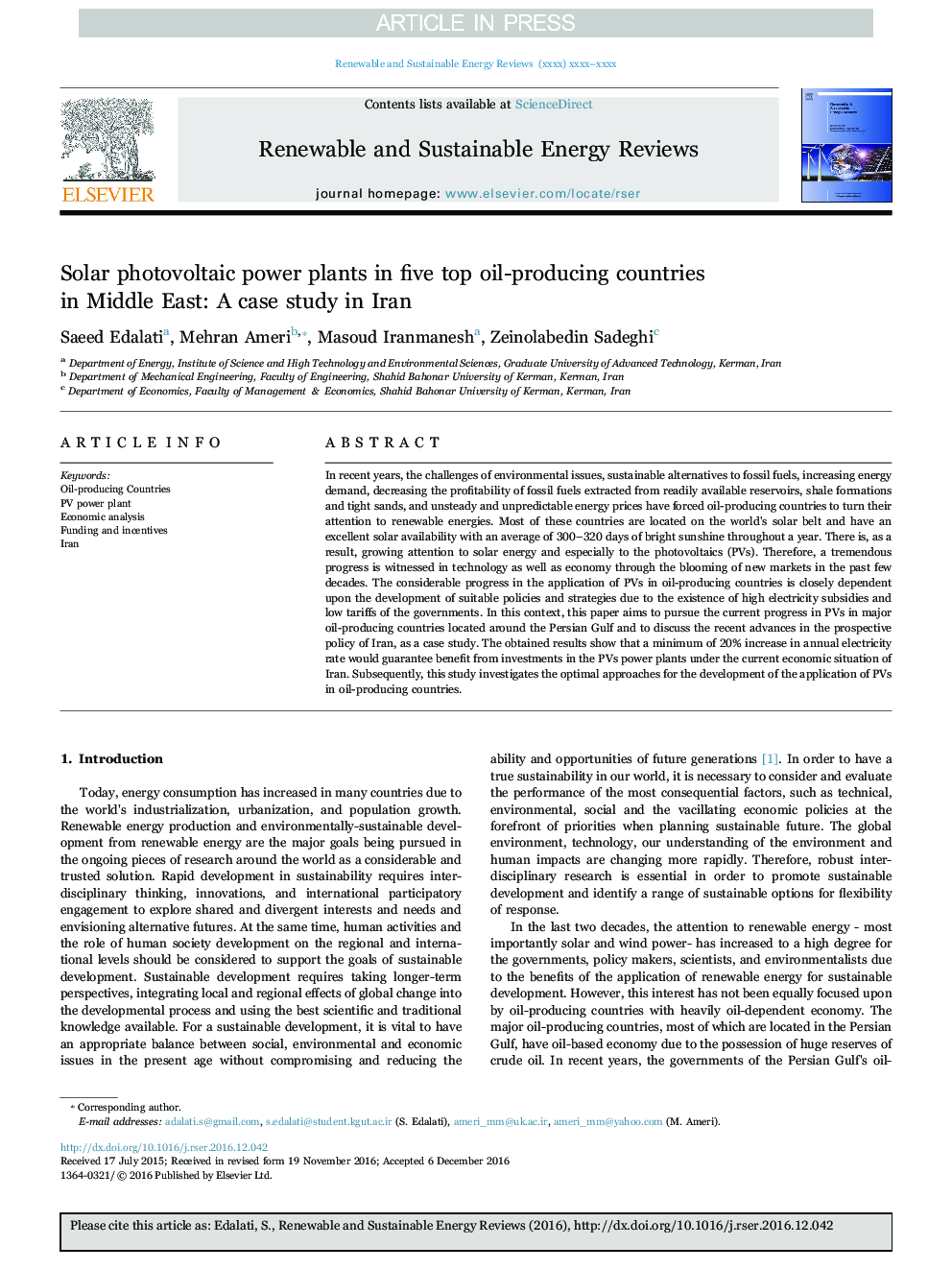| Article ID | Journal | Published Year | Pages | File Type |
|---|---|---|---|---|
| 5483405 | Renewable and Sustainable Energy Reviews | 2017 | 10 Pages |
Abstract
In recent years, the challenges of environmental issues, sustainable alternatives to fossil fuels, increasing energy demand, decreasing the profitability of fossil fuels extracted from readily available reservoirs, shale formations and tight sands, and unsteady and unpredictable energy prices have forced oil-producing countries to turn their attention to renewable energies. Most of these countries are located on the world's solar belt and have an excellent solar availability with an average of 300-320 days of bright sunshine throughout a year. There is, as a result, growing attention to solar energy and especially to the photovoltaics (PVs). Therefore, a tremendous progress is witnessed in technology as well as economy through the blooming of new markets in the past few decades. The considerable progress in the application of PVs in oil-producing countries is closely dependent upon the development of suitable policies and strategies due to the existence of high electricity subsidies and low tariffs of the governments. In this context, this paper aims to pursue the current progress in PVs in major oil-producing countries located around the Persian Gulf and to discuss the recent advances in the prospective policy of Iran, as a case study. The obtained results show that a minimum of 20% increase in annual electricity rate would guarantee benefit from investments in the PVs power plants under the current economic situation of Iran. Subsequently, this study investigates the optimal approaches for the development of the application of PVs in oil-producing countries.
Keywords
Related Topics
Physical Sciences and Engineering
Energy
Renewable Energy, Sustainability and the Environment
Authors
Saeed Edalati, Mehran Ameri, Masoud Iranmanesh, Zeinolabedin Sadeghi,
